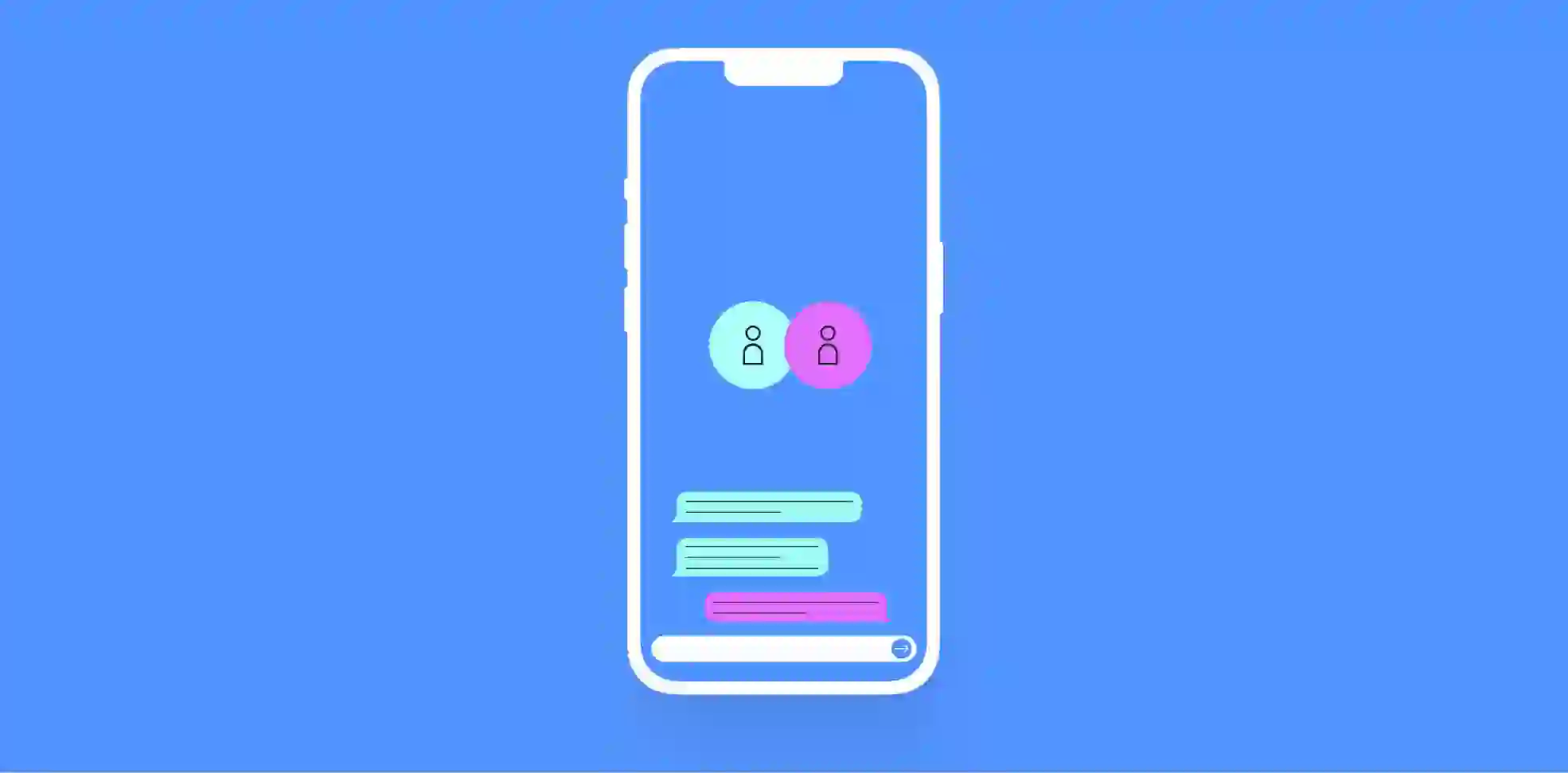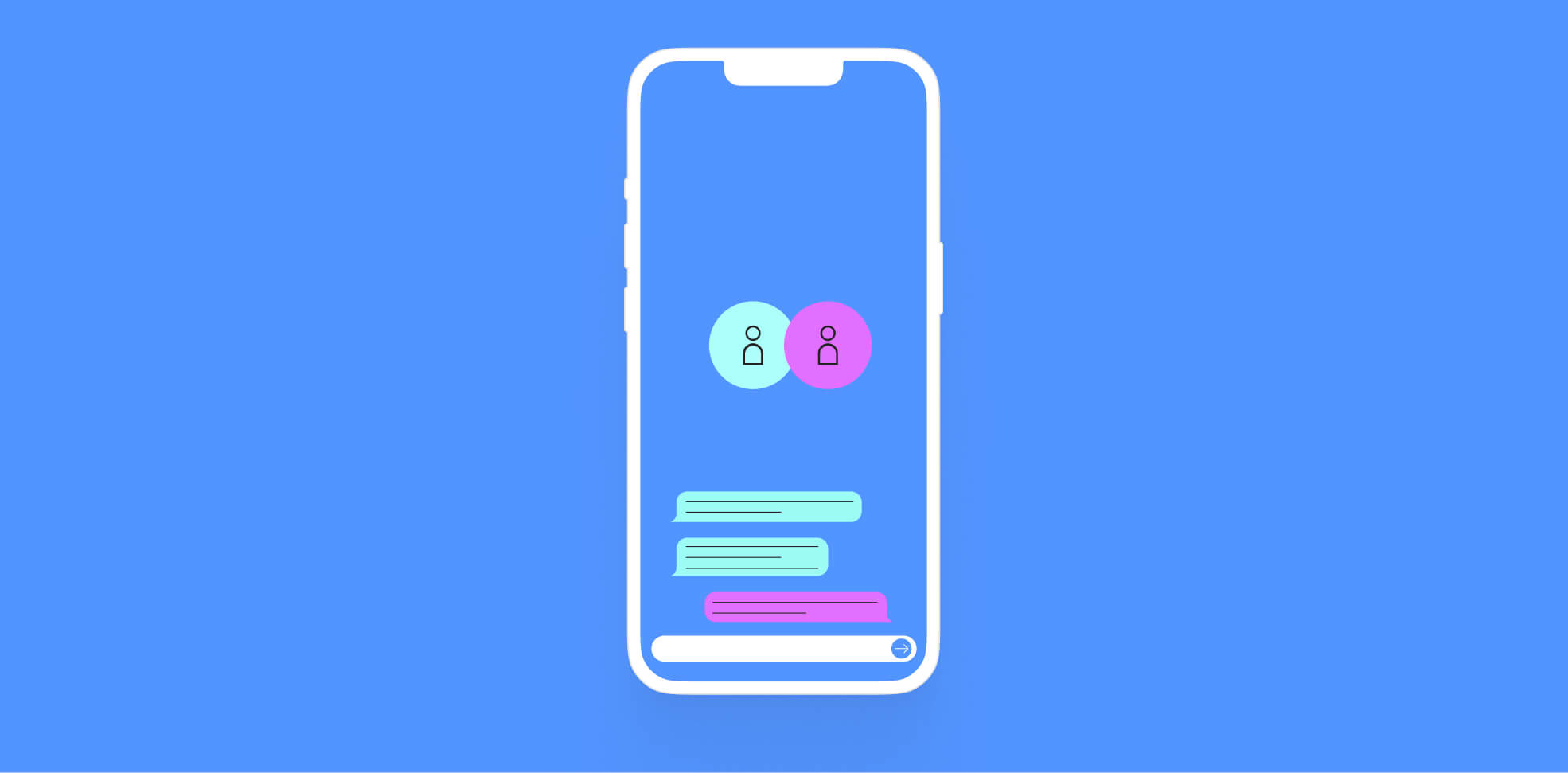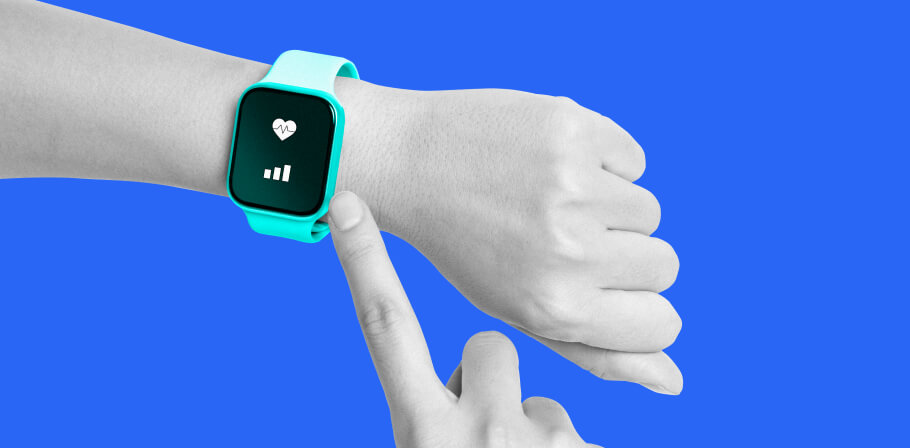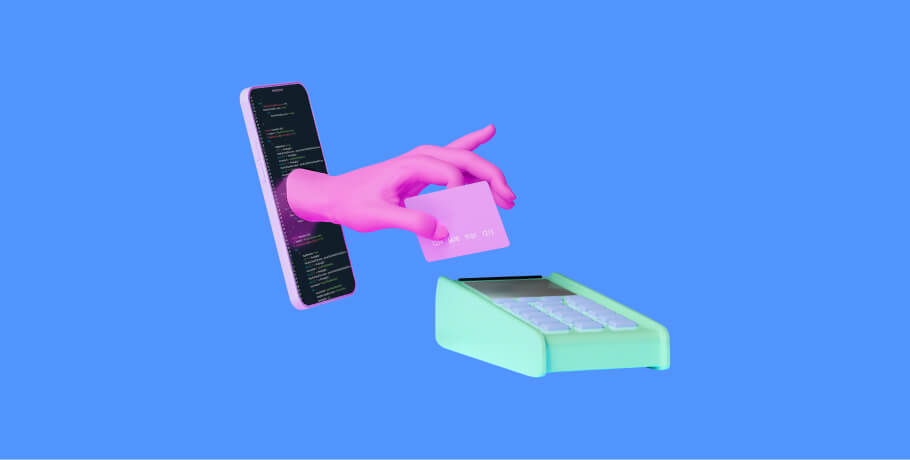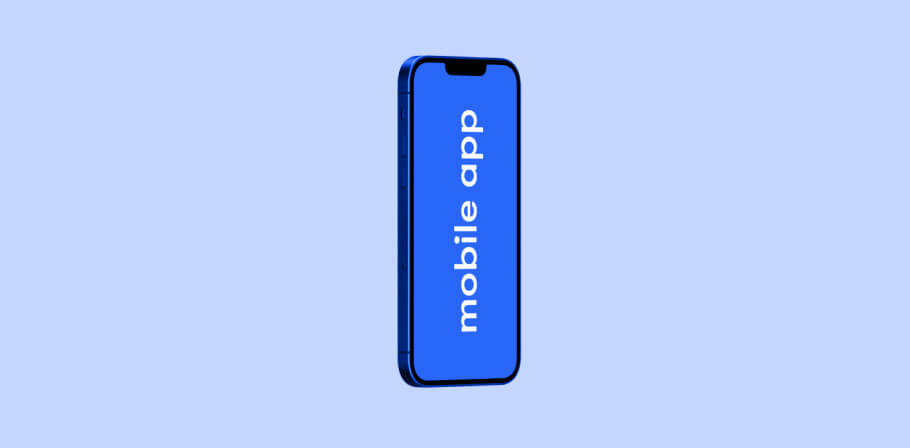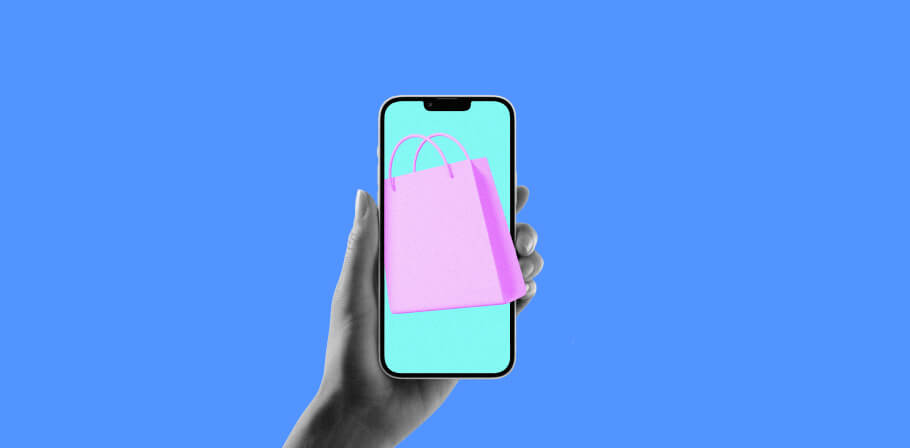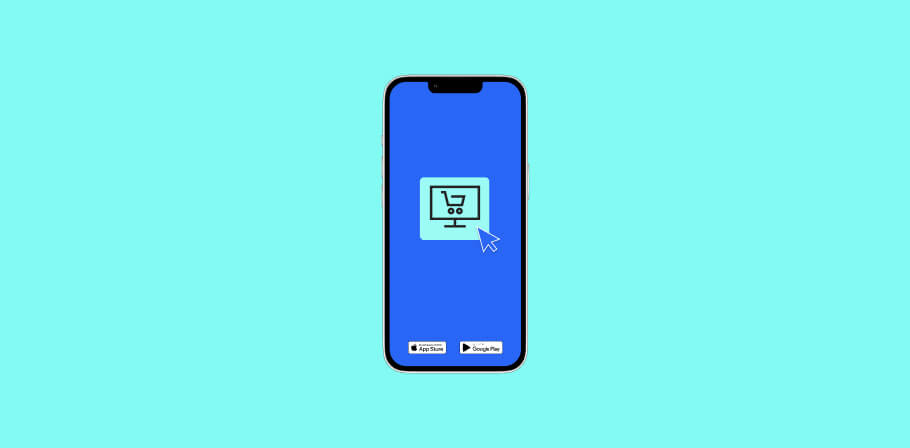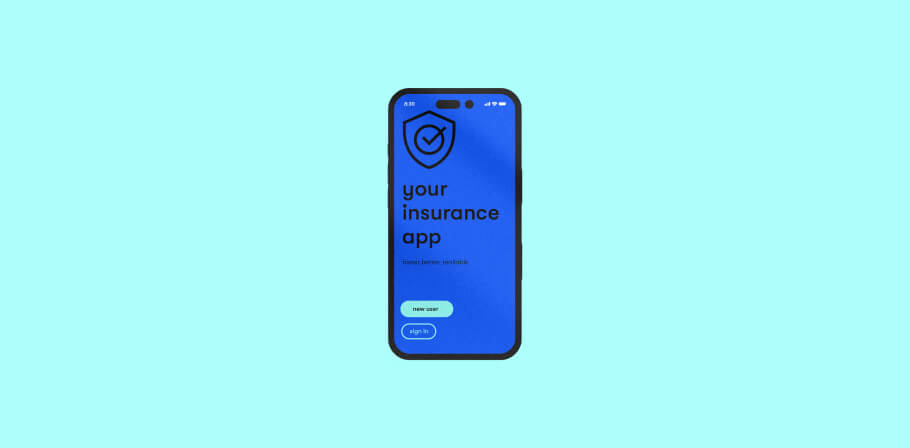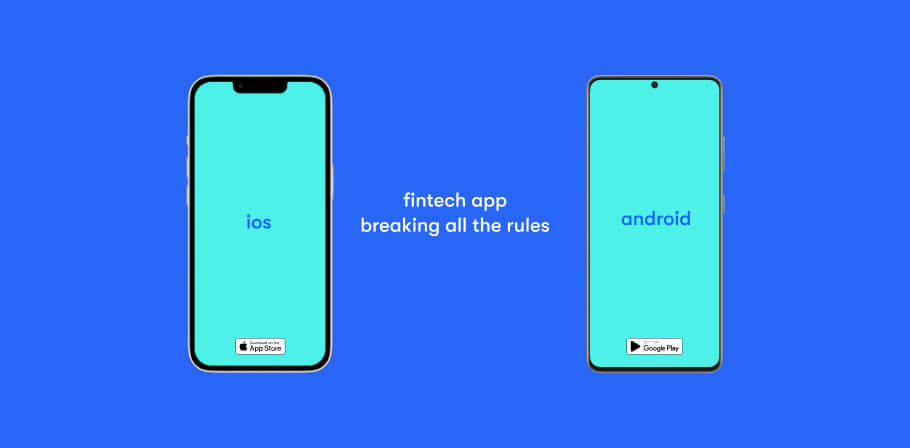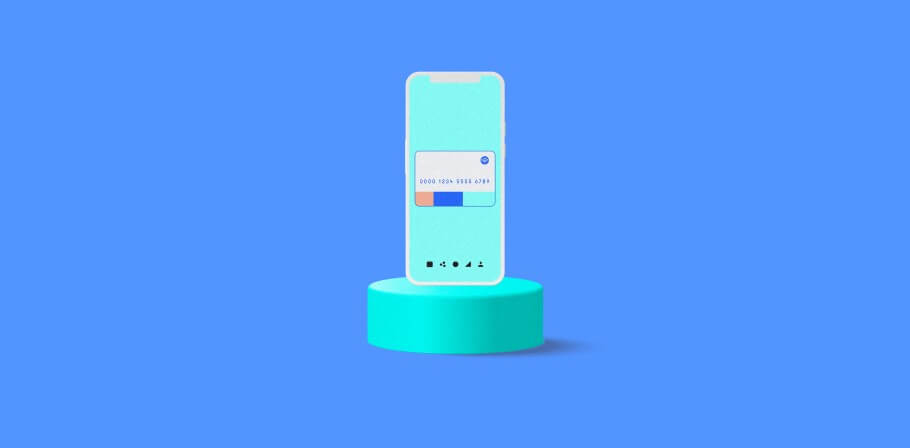In certain cases (e.g. people living in rural areas, far from hospitals), telemedicine could be the only way to get reliable care quickly. For other people it is a money-saver, a convenience, or both. Both experienced entrepreneurs and beginning businessmen reacted to the increased demand by expanding the existing telemedicine offerings as well as adding new ones. If you want to learn how to create a telemedicine app, whether the market conditions are favorable (they’re currently very favorable), and who the top dogs are, this article is for you.
Telemedicine Apps Market Overview
The market for telehealth services has been steadily growing for the past decade. And since the beginning of the pandemic, it has virtually exploded. From 2019 to 2020, the market grew by 44.9%, and the same growth rate is expected to continue for the upcoming few years. The US alone spent $23.5 billion on remote care.
There are several factors contributing to it:
- Lack of medical personnel. The Association of American Medical Colleges warns that by 2033, the USA may have 138,000 physicians fewer than needed. Apps for telemedicine help alleviate that need by allowing a doctor to remotely treat patients that live far away.
- Smartphone proliferation. In the US, 81.5% of the population owns a smartphone. This means that with an Internet connection they can access telehealth services.
- COVID-19 pandemic. In 2020-2021, 38% of Americans turned to remote care in some form. There was a 154% increase in telehealth visits in March 2020 compared to March 2019. And over 80% of those who tried telemedicine say that they will use it again.
It’s no wonder this is a good time for starting a telemedicine app. In 2021, telehealth startups raised more than 29 billion dollars. This was a new record — almost twice the size of 2020, and that was also a record-breaking year. Investors supported apps for mental health, diabetes care, musculoskeletal care, medical marketplaces, and many other ailments or healthcare needs.
In short, there has never been a better time to develop a telehealth app.
Why Is It Worth Developing a Telemedicine App?
Apps for remote care solve a number of important issues: convenience for everyone; time and cost savings for doctors, patients, and private practice owners; more customers for independent practitioners, etc. Here’s why working on telehealth is worth it.
Increases Time For Both Doctors and Patients
Not having to drive to a medical facility, wait in line, and then proceed to the doctor that’s been assigned to you — these seem like a nice set of benefits. Thanks to telehealth apps, people can choose the physician they prefer, and talk to them from the comfort of their own home.
For medical professionals, this also plays a part. They can now save time by helping remote patients without driving to a local hospital or doctor’s office.
Improves Clinical Workflow That Supports Scaling
For a practice owner, telehealth apps are easy to work with and scale. They can be integrated with EHR/EMR systems, practice management software, and other elements of the healthcare industry.
Incidentally, this also takes some work off the staff, as the information is shared between systems and is often entered by the patients themselves.
Expands Clients’ Base
Being able to provide services over the Internet expands your potential target audience immensely. Suppose you are known for the quality of your psychiatric help. If you advertise it to the people in the nearby counties and states, you’ll be able to attract many more people who would have never come to you otherwise.
Top 10 Most Popular Telehealth Apps
Studying the potential competition is a good way to get ideas for your own app. Let’s take a look at some of the most successful examples, both general-purpose and specialized.
TelaDoc
An industry powerhouse with millions of users around the globe and glowing reviews. Teladoc is an all-encompassing telehealth app, providing primary care, mental health, wellness, and expert opinions. Its services are covered by insurance, prescriptions are valid at pharmacies, and the visit results can be forwarded to the patient’s primary care provider — with their consent, of course.
Teladoc earns money through two main streams:
- Corporate subscriptions
- Patient fees
Doctor-on-Demand
Another powerful competitor with almost 100 million users in the USA and a wide network of partnered practitioners. This is the place to go for urgent care, chronic care, preventative medicine, and mental health assistance. The app is also rated very highly, which is a good sign of consumer satisfaction.
Doctor-on-Demand charges a flat fee per 15-minute visit and takes a 25% cut. This way the company doesn’t spend anything if its services aren’t used and gains a net profit otherwise.
MDBox
MDBox is designed to provide quick care for people. Once a person registers, they can fill out their symptoms and get connected to the appropriate specialist. After a video call, they will receive a prescription that will be accepted by almost all pharmacies in the US (five states aren’t covered as of this article’s writing).
MDBox helps its clientele receive treatment for flu, cold, and COVID, get contraceptives, etc. It charges about $50 for a virtual visit.
GoodRx Care
GoodRx is mostly known for its discount prescription program. However, they also decided to create a mobile telehealth app that includes general care, sexual health, medication refills, and much more. GoodRx Care has great reviews on app stores and is integrated with the company’s main offering: a prescription program subscription that gives discounts for virtual visits.
Like most similar apps, GoodRx Care charges a flat fee per visit.
MDLive
This app can be covered by insurance. It focuses on urgent and primary care, as well as dermatology and mental health. MDLive has great user reviews and is very straightforward to use. Moreover, you can contact a medical professional right away if there is an urgent issue.
The price for MDLive’s services depends on the user’s insurance plan. Best case scenario: the visit is covered entirely, and the copay is zero.
AmWell
A titan of the healthcare industry, with 2000 hospital partners and 91,000 providers using their systems. The app is available for Android, iOS, and Web and covers urgent care, chronic disease management, dermatology, and other widespread conditions. Patients can also get their prescriptions from the app.
AmWell can be covered by insurance and also charges a flat rate for virtual visits.
Talkspace
Talkspace is a dedicated app for remote psychotherapy and psychiatry. Its services include therapy for individuals and couples, as well as specialized teen therapy and prescription management. It also accepts insurance.
Talkspace is a subscription-based app, with payments charged monthly, quarterly, or biannually. The price depends on the format: messaging, live, or both. The users can also purchase additional sessions for a flat fee.
BetterHelp
BetterHelp is another mental health-focused app. It also offers individual, teen, and couple counseling in messaging, live chat, and video chat formats. BetterHelp is partnered with a lot of prominent companies to provide care for their employees. These include Twitch, American Express, and TikTok.
BetterHelp charges monthly subscription payments and is not covered by insurance.
iDoc24
This is a worldwide app for telemedicine that helps people with skin problems. One just needs to take a picture of a problematic area, upload it, and wait for a response from a specialist. It is unusual, as people don’t have to register (to preserve their anonymity), there is a Web-based version, and a special program for dermatologists to get a second opinion.
iDoc24 doesn’t accept insurance and charges a flat fee for each case.
Maven Clinic
Women’s health is the focus of this app. Maven is especially well-known for its pregnancy and fertility program. However, its scope goes far beyond this and includes family therapy, referrals to local practitioners, and even breast milk delivery.
Maven isn’t covered by insurance. It charges flat fees based on the professional’s specialty and education level.
If you want to connect doctors and patients like these companies do, EPAM Startups & SMBs is your best bet for a development partner. Get in touch!
If you want to connect doctors and patients like these companies do, EPAM Startups & SMBs is your best bet for a development partner. Get in touch!
Telehealth Application Benefits
Now let’s look at what telemedicine app development can bring.
Doctor Benefits
The first benefit the medical professionals gain from using telehealth apps is safety. When working with potentially infectious patients, doing everything through a screen is significant protection. Given that we are living in times of a pandemic, this is a major factor, as preserving one’s own health is especially important.
The second benefit is an opportunity to earn more. Licensed practitioners can earn a good living while working full-time through apps like TeleDoc or Doctor-on-Demand. And that’s without the need to drive to work or do any of the tedious clerical tasks that tend to take a lot of time.
The third advantage is better control. Being able to conveniently stay in contact with chronic patients is an important factor that improves medical outcomes. Adherence to medications is another major issue that also largely depends on doctor-patient communication. By using telehealth options for it, you can improve recovery time, decrease relapses, and ultimately get better reviews.
Patient Benefits
The main advantage for patients is convenience. When you build a telehealth app, you help people connect with providers from the comfort of their own homes. They only need a device with an Internet connection. If a specific doctor isn’t available, the app will help the patient find a suitable replacement. As a result, fitting a visit into a busy schedule becomes much easier.
The second advantage is saving money. The services of many remote care apps can be covered by insurance. And even the rest of them tend to keep prices on par or below the average co-pays for a visit. Then there is a matter of saving time and gas, as one doesn’t have to drive anywhere. All-in-all, a pretty good deal.
The third benefit is family integration. This is especially pertinent to seniors and minors, as they might need assistance from a family member. If the patient authorizes it, their relatives can join the visit to provide additional information or help with adhering to the treatment plan.
The fourth benefit is specialist availability. We have already mentioned that there is a shortage of physicians. So physically getting to see, for example, a psychiatrist or a dermatologist can be hard. On an app, one will get connected in minutes. The earlier the patient starts dealing with their issue, the higher the chance of recovery.
Last but not the least comes the improved effectiveness of treatment. Given the increased contact between patient and provider, the healing can be sped-up by adherence to the medical plan and any changes or modifications, when necessary. The recovery time decreases as a result.
Business Profits
Telehealth carries a host of benefits for a business. The primary one is of cost reduction. You don’t have to rent an office, hire extra administrative staff, buy licenses for EHRs and practice management software. Just one remote tool will cover everything you need. According to a report by the American Hospital Association, telemedicine can shave off about 11% of costs and deliver massive ROI.
Another advantage is expanding your customer base. You can build a telemedicine platform that could potentially serve an entire target population if you have the budget. Apps like TelaDoc already do so. You are not limited to patients that live within driving distance from your practice.
Lower turnover is another important benefit. Physicians experience an extremely high burnout rate, partially because of the workload and administrative tasks. Offering them remote work options will decrease their stress and increase company loyalty.
Higher patient care quality also plays a part. More and more people consider remote care as good as an in-person visit. Add the benefits of convenience, and you can see how it can attract more patients to your practice.
How Does a Telemedicine App Make Money?
The most common way to monetize a telehealth app is to charge a flat fee for a visit. Most of the money goes towards the medical professional handling the consultation. However, the app retains a fee (about 25% in most cases) and this constitutes profit.
However, there are other options.
One is to offer a subscription, usually for a limited number of visits per month or week. This provides a steady and predictable revenue stream but might not work for all business models. For example, it makes sense for mental health apps, as therapy usually requires a somewhat lengthy commitment.
Another is providing corporate care. Access to a sufficiently big telehealth app can be used as a perk for employees, so it makes sense to partner up with companies that will pay you for serving their staff. The exact conditions depend on you and your partner, of course.
If you want to build a medical marketplace, you can earn money from ads. This works just like advertising on any other app.
Challenges of Telemedicine App Development
If you want to build a telehealth application, there are some hurdles you need to be ready for.
Find the Right Niche and Key Value
In the telemedicine domain, this matter is especially complex. Not every medical specialty is a fit for remote care (e.g. dentistry), and there are already powerful players on the field. But you can still target a more narrow niche (e.g. people from your country if there are no large competitors), use an original pricing model, or have better customer service.
UI/UX
A sick person doesn’t have the time to navigate through the clutter of a complicated interface. They need help, and if they can get it from your competitors, they will. So follow the example of the top players and invest in sleek and intuitive UI.
Data Security and Telemedicine GDPR
Medical information is very sensitive and must be protected carefully. Only gather the absolute minimum amount of personal data necessary, use secure databases, and give access strictly on a need-to-know basis. Otherwise, you could face legal repercussions, not to mention reputational damage.
The most important laws here are:
- HIPAA (USA)
- PIPEDA (Canada)
- Data Protection Directive 1995/46/EC and e-Privacy Directive 2002/58/EC/IEC623004 (EU)
By the way, if you need expert advice on hacker-proofing your healthcare app, don’t hesitate to give us a call. We’ve been doing it for decades.
By the way, if you need expert advice on hacker-proofing your healthcare app, don’t hesitate to give us a call. We’ve been doing it for decades.
Must-have Features of a Telehealth App
While there are some differences between specialty and general-purpose telehealth apps, there are also many similarities. These are the features you have to include in the MVP of a telemedicine app.
For Patients
Registration
While in some cases you can avoid this (like iDoc24 did), for the most part, you have to have it. Keeping patient information helps monitor treatment stages, process charges, deal with insurance claims, etc. How exactly you arrange it is up to you. For example, Talkspace allows patients to keep their anonymity and use a nickname to introduce themselves to doctors.
Payment processing
Some sort of integrated payments system is a major factor in making your telehealth app convenient. Logging in to another site or, worse, going to a bank to send you a check is a dead end. You can choose to integrate a payment gateway (e.g. Stripe or Braintree) or use a system built into an app store.
Video calls
This is the core of remote care. In most cases, the doctor will need to see the patient to accurately diagnose them. And even if it isn’t strictly necessary, a video call is more personal than voice-only discussion, let alone text messaging. This feature can be augmented by live chat, internal mail, and voice communication. Also, you can save on developing it from scratch by using a pre-made video conferencing SDK (software development kit).
Scheduling
You need to put the patient in touch with the relevant medical professional. Real-time communication will likely be needed, so you need to connect the schedules of a patient and a doctor. This can be done automatically or by letting the user select the appointment time.
Reviews
Some form of gathering user feedback is important to track your app’s performance and see how well the doctors do their job. A review system is a simple and effective way to do so.
For Doctors
Registration
Just as there is a sign-up option for patients, there should be one for the medical professionals. However, it has to be implemented differently and include a verification process. You only want licensed specialists, after all.
Prescriptions
A virtual visit that won’t allow a patient to get the medication they need is useless. So a prescription management system has to be implemented. Besides the typical aspects (e.g. medication names), it should be able to connect to the systems that pharmacies use for the users’ convenience.
EHR
It doesn’t have to be as extensive and powerful as a full-fledged EMR. However, having a system to securely store patient data is important for long-term care. You can either build a basic one from scratch or integrate the telehealth app with the electronic health records you use at your physical practice, depending on your business model. The main thing is that you have a place to store all medical history.
Doctors’ profiles
This is the place to list all the medical professionals’ credentials, experience, and other important information. Profiles will help the patients select providers who fit their needs and will help physicians get more appointments. In some business models (e.g. medical marketplace) this is core to the app’s offering.
Tech Stack Needed for Telehealth App Development
The tech stack largely depends on your goals and business vision. Thinking that — for example, a TelaDoc-like app development — you only need to use the same tools as your competitor is not exactly true. In practice, the technology stack is affected by the following:
- Platforms (Android, iOS, Web, etc.)
- Inherent security
- Development speed and cost
- Developer availability
Moreover, you don’t have to develop everything from scratch. By using pre-made modules (SDKs, libraries, frameworks, etc.) for certain functions you can shave off a lot of time and decrease the initial investment.
Having said that, there are certain technologies that have proven themselves.
Mobile: Java/Kotlin (Android), Swift (iOS), Flutter, React Native, Xamarin (hybrid).
Web frontend: JavaScript, React.js, Angular, Vue.js.
Web backend: Java, Scala, C#, Python, .NET, Go.
A lot depends on the people who will actually execute your development project. So if you need advice regarding the tech stack needed to create a telemedicine app, feel free to ask for healthcare IT consulting!
A lot depends on the people who will actually execute your development project. So if you need advice regarding the tech stack needed to create a telemedicine app, feel free to ask for a consultation!
5 Steps to Making a Telemedicine App
Now we will show you how to develop a telemedicine app step-by-step. They are the same in cases where you want to build a medical startup or expand your practice’s offering by going digital.
Conceptualization
This is the preliminary stage where you plan the overall direction of your app. You need to answer questions like:
- What problems will my app solve?
- How will my app earn money?
- Who will my app serve?
- How will my app distinguish itself from the competition?
In short, this is the time to decide the identity of the project. Note that you might still have to pivot later if the business circumstances change or the initial concept turns out to be unsuccessful.
DIY or contractor?
Once you know what you are going to build, you need to decide who will do the building.
The first option is doing everything in-house. It allows for complete control of the project, decreased risk of data leaks, and self-reliance. However, it is much more costly, and finding the developers with the right skills might prove a challenge — FAANG and other big companies tend to attract the lion’s share of the talent.
The second way is to hire a dedicated software development company, either on-shore or from abroad. It tends to be cheaper, provides direct access to qualified IT specialists, and leverages the development experience of the contractor. However, unreliable development vendors can go over time and budget, and multicultural communication can sometimes be difficult.
You can also combine the two. For example, by constructing the backend yourself and hiring someone for healthcare mobile app development.
Creating a telemedicine app
Now you (and possibly your vendor) can get to building something great. This includes all the design and development activities, from selecting the right MVP features to testing the finished pieces of the product. Most telemedicine application development companies use various agile methodologies that promote developing complete features in short increments, so you will be able to see the progress almost in real-time.
User acceptance testing
Before going to market, it is advisable to select a panel of people that represent your target audience and have them test your app as naturally as possible. This will help find and eliminate user experience issues and launch a better product as a result.
Release and post-launch support
Once your app is done, it’s time to release it. It will start gaining users and gathering feedback that you can base your further development on. Moreover, you will be able to add new features and scale the operation.
How Much Does It Cost to Create a Telehealth App?
If you want to build a telemedicine system, you might need anywhere between 15K USD and 1,000,000+ USD. The exact cost to develop depends on the following factors:
- Scope. The number and complexity of features determine the expenses required to create them. After all, the same model of a car can come in many different packages, and the final price can differ by 30%. It is the same with software.
- Development model. If you are going to build a telemedicine app in-house, you will have to pay more. For example, in the US, an Android developer could require a salary of over $100K per year, not to mention all the overhead (taxes, software licenses, perks, office, etc.). But if you hire an offshore company that provides healthcare software development services, you could get the same quality for $50/hr or sometimes less.
- Development methodology. If you hire a software development company and want a fixed-price contract, expect to pay more. In such cases, the vendors budget extra time to cover for various unexpected complications. With Time & Material only this isn’t an issue.
In the end, you’ll need to discuss the costs with your development team, whether in-house or outsourced. You can also message us, describe your project in a consultation, and get a ballpark quote for free!
There are ways to decrease the initial investment into the development.
- MVP. A minimum viable product (MVP) is a version of a software that solves the problem it is designed to address and can distinguish itself from the competitors. If you release only the core features from the start, you’ll be able to start testing concepts and perhaps earning money that can go towards updating the product in the long run.
- Prototyping. A well-designed prototype can help discover potential problems in UI and UX and even serve as bait for investors.
- Premade modules. To save money on developing certain features (e.g. medical records) you can integrate proprietary (paid) or open-source SDKs and libraries.
In the end, you’ll need to discuss the costs with your development team, whether in-house or outsourced. You can also message us, describe your project in a consultation, and get a ballpark quote for free!
Our Experience in Telemedicine Platform Development
Businesses that want to develop a telemedicine platform but don’t have the internal capability to do so often come to EPAM Startups & SMBs. And for good reasons.
First, leveraging decades of experience in healthcare web design and development, healthcare mobile apps, patient monitoring software, and medical IoT, our developers have worked on everything from EHRs and telehealth apps to wearable patient monitors.
Second, EPAM Startups & SMBs provides unparalleled flexibility. With different pricing models (Fixed Price, T&M, Dedicated Team), developers across the globe, and employees with every technical skill set imaginable, it is a fit for almost any project.
Third, there is a variety of available talent. EPAM Startups & SMBs can rely on tens of thousands of qualified IT specialists. This means you will get the best tech stack for your case (and not the just one that some company can produce in the moment), as well as the people who have the most experience with projects like yours.
Conclusion
The development of a telehealth mobile app or a web-based telehealth platform is a serious undertaking with many inherent complexities: being GDPR- and HIPAA-compliant, finding a good niche, working out the perfect UI, etc. However, billions of dollars in investment money is flowing to the startups, the leading competitors are experiencing a pushback from the new arrivals, and there are reliable software development vendors to help them. So study this article and get to implementing your app — possibly with the help of EPAM Startups & SMBs.
FAQ

Expert digital communicator and editor providing insights and research-based guides for technology buyers globally.
Expert digital communicator and editor providing insights and research-based guides for technology buyers globally.
Explore our Editorial Policy to learn more about our standards for content creation.
read more